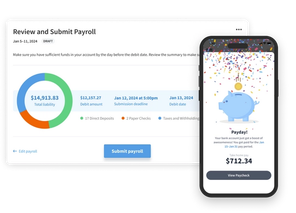
Eddy’s HR Mavericks Encyclopedia
The world's largest free encyclopedia of HR, with 700+ HR articles and podcasts.
Created by Eddy and our HR Mavericks community.
Compensation & Benefits Statistics
Compensation and benefits are incredibly complex HR functions, and significant changes to the way we work over recent years have made these areas more difficult still. Help is at hand, however; our diligent research has gathered some of the latest and most important compensation and benefits statistics to empower your planning and labor market responses.
Compensation and benefits are incredibly complex HR functions, and significant changes to the way we work over recent years have made these areas more difficult still. Help is at hand, however; our diligent research has gathered some of the latest and most important compensation and benefits statistics to empower your planning and labor market responses.
Using Compensation and Benefits More Strategically
The statistics make it clear: compensation and benefits play an enormous role in the way you attract and retain quality talent. If you expect employees to give their all, you have to be willing to pay them what they’re worth and provide the benefits they need and want. Here are a few things you can do to make sure your compensation and benefits are up to scratch.
- Be strategic about compensation. Paying your workers right takes a lot of research and decision-making. Create a compensation strategy to guide your overall approach (will you lag, meet, or lead the market?), then benchmark individual jobs to make sure your salaries are attractive.
- Be transparent and fair. If you’re not already, consider demonstrating your commitment to pay transparency by adding a salary range to job postings. This, combined with a solid compensation strategy, will ensure that all your employees are paid equitably.
- Offer as many benefits as you can. Research the different types of employee benefits out there, and offer whatever you can afford. Start with the basics: health insurance, dental and vision insurance, and paid time off.
Topics

Eddy
Eddy is the all-in-one HR tool built with you in mind. The robust features and ease of use will benefit your company both inside and outside your HR team.
Other Related Terms
Eddy’s HR Mavericks Encyclopedia
Compensation & Benefits Statistics
Compensation and benefits are incredibly complex HR functions, and significant changes to the way we work over recent years have made these areas more difficult still. Help is at hand, however; our diligent research has gathered some of the latest and most important compensation and benefits statistics to empower your planning and labor market responses.
Compensation and benefits are incredibly complex HR functions, and significant changes to the way we work over recent years have made these areas more difficult still. Help is at hand, however; our diligent research has gathered some of the latest and most important compensation and benefits statistics to empower your planning and labor market responses.
Using Compensation and Benefits More Strategically
The statistics make it clear: compensation and benefits play an enormous role in the way you attract and retain quality talent. If you expect employees to give their all, you have to be willing to pay them what they’re worth and provide the benefits they need and want. Here are a few things you can do to make sure your compensation and benefits are up to scratch.
- Be strategic about compensation. Paying your workers right takes a lot of research and decision-making. Create a compensation strategy to guide your overall approach (will you lag, meet, or lead the market?), then benchmark individual jobs to make sure your salaries are attractive.
- Be transparent and fair. If you’re not already, consider demonstrating your commitment to pay transparency by adding a salary range to job postings. This, combined with a solid compensation strategy, will ensure that all your employees are paid equitably.
- Offer as many benefits as you can. Research the different types of employee benefits out there, and offer whatever you can afford. Start with the basics: health insurance, dental and vision insurance, and paid time off.
Topics

Eddy
Eddy is the all-in-one HR tool built with you in mind. The robust features and ease of use will benefit your company both inside and outside your HR team.
Other Related Terms
Eddy's HR Newsletter
Sign up for our email newsletter for helpful HR advice and ideas.


